
30.04. - 10.05.2015
Open Mon-Sun, 2-9pm
Elie Mouhanna, Lisa Parks,
Marc Abou Farhat, Tadej Fius
and Miha Vipotnik
Spectral configuration; 2015
interactive multimedia installation
(aluminum wire, digital video, video analysis, real time rendering, networking)
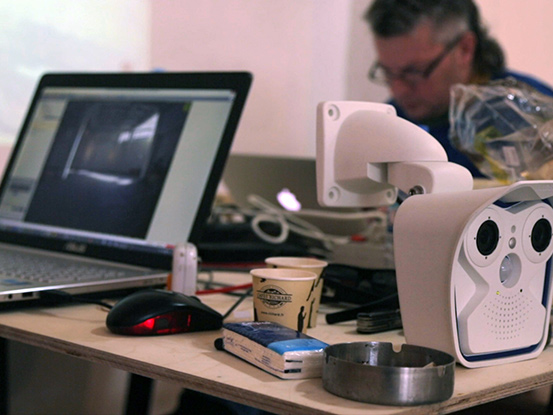
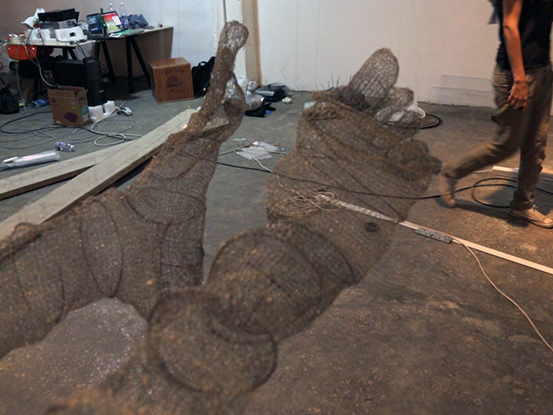
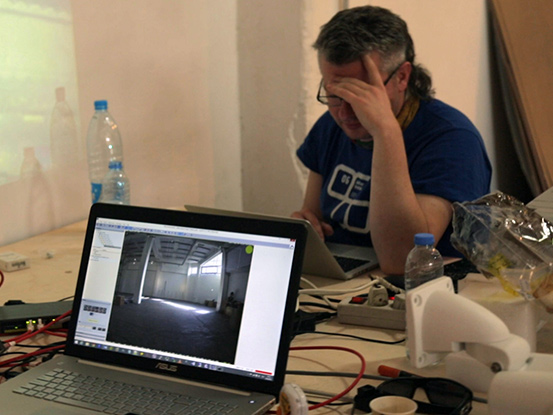
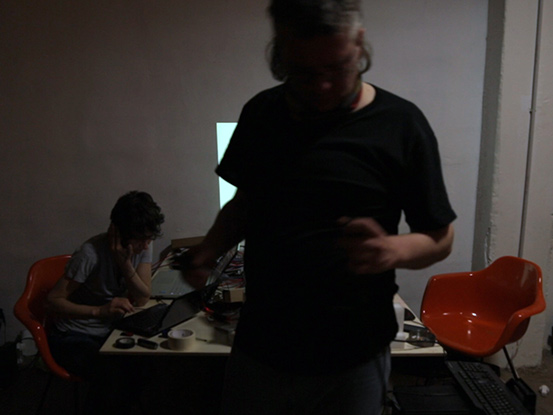

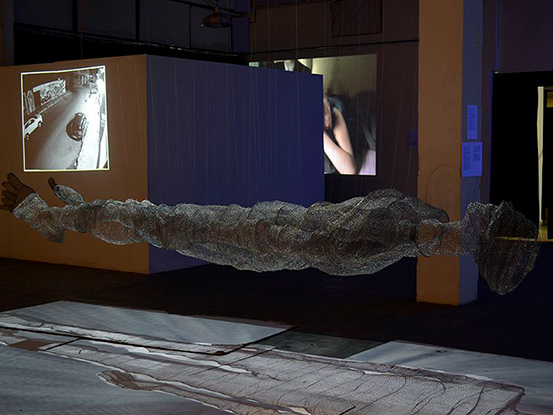
1 - 6
<
>
Past projects

Lisa Parks: research, idea of the project
Miha Vipotnik: concept of the project, visualization
Elie Mouhanna: Crocheted human body from nickel-plated copper wire (4.70 m long)
Tadej Fius: interactive programming, visual mapping
Marc Abou Farhat: montage and multiple layered video
Lone Drone (as I call this piece) explores the vertical politics and mediated materialities of drone warfare. How long does it take to make a body? How long does it take to destroy one? As it hovers in mid air, the wiry surface of this colossal corpse turns translucent as multiple media projections made from leaked military-industrial complex video flicker around and upon it. These projections envelop the silvery drone body within the luminous footprint of world history and militarization, cycling through a series of spectral suspects, framed targets, and aerial strikes. As the Lone Drone soars above, it not only senses light and heat waves from afar; it reconfigures and remediates life on earth. Circumnavigating the earth on an endless flight path, the Lone Drone alters our disposition to the sky, the ground beneath our feet, and how we feel in our skin.
Lisa Parks
The body is being reinvented. The process of crocheting a large scale body for an extended period of time is in turn a way for the artist to reflect upon several subjects, constantly questioning the relationship between the idea and the technique used to realize that idea; the function of time with respect to the process; and to what extent crochet work can become a prosthesis of the artist's constantly changing state of mind. Using a labor-intensive, time-consuming hand craft, the artist acts as a proto-computer. The eyes and hands are used to scan the body, transforming it into a set of data (measurements). The data is then analyzed in order to generate the instructions necessary to create a representation of the body. The new body is formed as the hands follow the generated instructions. The entire body is an endless set of instructions. Whatever happens in real time is happening in slow motion, for an extended period of time. This allows a constant re-evaluation of the process and a more moral approach to decision making. Instantaneous accidents in real time are seen happening slowly: the artist witnesses, over a period of several hours, the creation of a deformity in the figure due to a miscalculation. Irreparable damages in real time can be stopped before happening or fixed, in slow motion.
Elie Mouhanna
Tadej Fius (born 1975) is Slovenian occasional poet, a selftaught programmer, impressed by the power of bits. Being influenced by cognitive and computer sciences, his main focus are novel approaches to solutions and tasks. His work in computing incorporates several areas, ranging from visualization and artificial intelligence to parsers and parallelization. He has collaborated with several Slovenian artists, including Davide Grassi, Miha Vipotnik and Darij Kreuh, with whom he collaborated for several years. His work in computer graphics software is known nationwide being used in TV show HriBar for 8 years and his real time concept for character animation in TV shows was unique for many years before mainstream media started using it. He created first Slovenian simulator for Ministry of Defence and his work on virtually reality in medical applications was pioneering in the field of simulated surgery for human liver and long bone surgery. He collaborated with University Clinics Center in Ljubljana, Anatomical Institute, Geodetic Institute, Institute Jožef Stefan and other private companies. His studio (www.mediaatlas.si) offers services in game development, CGI, motion capture and general software development.
Special thanks to



